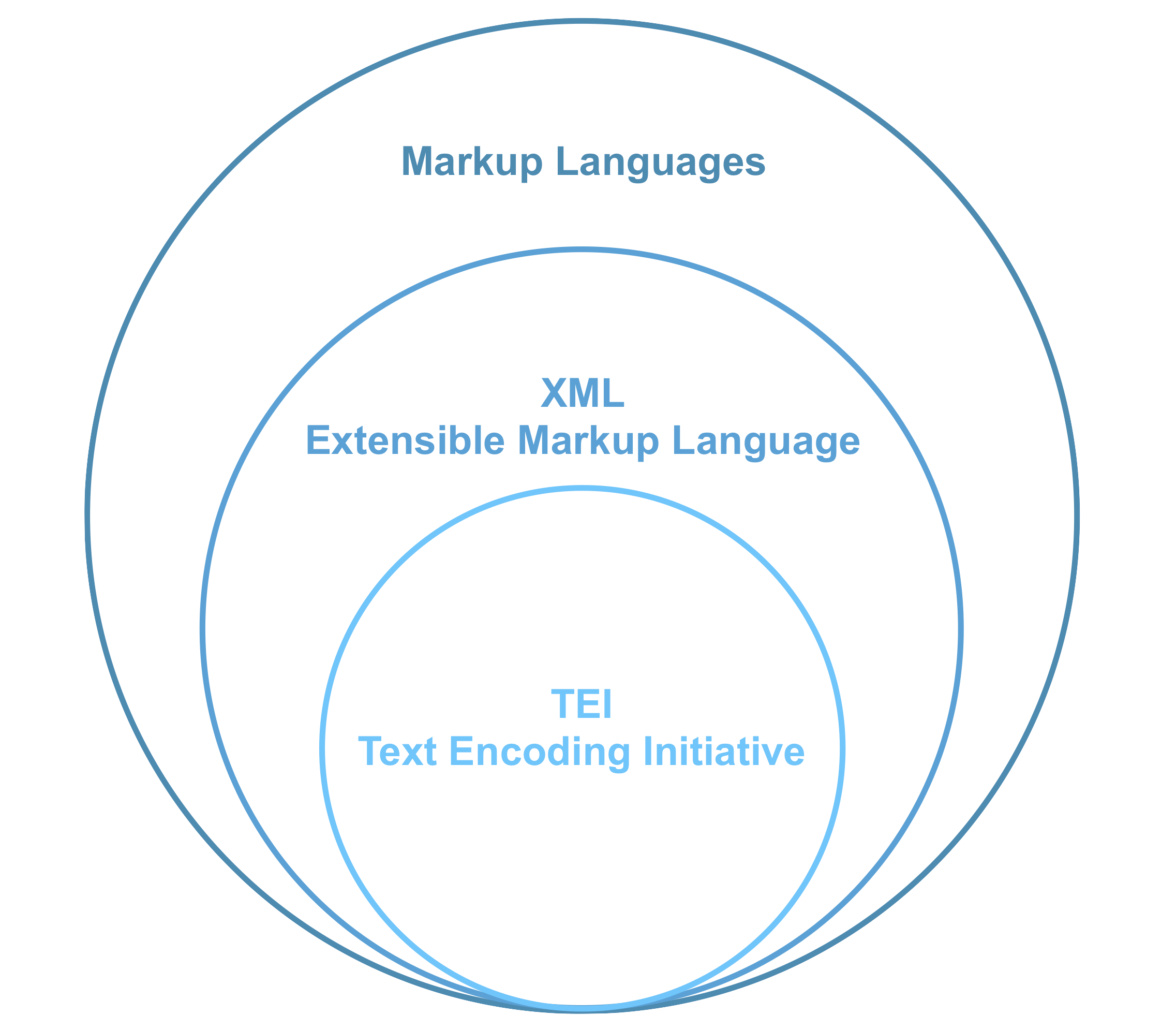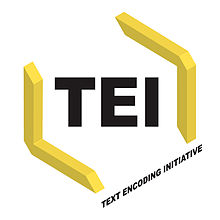4 Markup languages

TEI as XML
4.1 Procedural vs. Descriptive Markup
- Procedural (HTML): Visual, typographic, representation; WYSWYG: What You See is ALL you Get.
<bold>Miguel de Cervantes</bold> wrote <italic>Don Quixote</italic>- Descriptive (XML): Markup Semantic, funcional, structured; Meaning before format.
<name>Miguel de Cervantes</name> wrote <title>Don Quixote</title>4.2 XML Golden Rules
XML Element terminology:
<tag attribute="value">data</tag>- An element consists of a start-tag, optional content, and an end-tag
<persName>Miguel de Cervantes</persName>- An element may have attributes, each consisting of a name and a value.
<name type="person">Miguel de Cervantes</name>- An XML document may contain processing instructions or comments
<?xml-stylesheet type="text/css" href="visualize-tei-xml.css"?><!-- This is a comment: here starts the first sonnet -->- Elements and attributes are case sensitive.
<name> != <Name>- Empty elements can use a minimized tag syntax.
<pb/> = <pb></pb>4.2.1 No overlapping
├── TEI
├── teiHeader
├── fileDesc
├── encodingDesc
├── text
├── front
├── body
├── head
├── div
├── back
4.3 Text Encoding Initiative: TEI

- Development of markup for texts;
- International standard;
- Interchange of data;
- Platform independence;
- Preservation;
- Research community.
TEI Consortium and Guidelines: https://tei-c.org